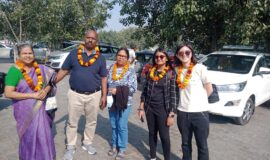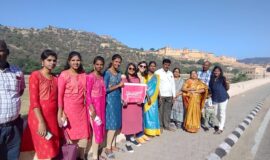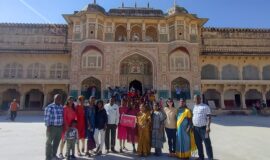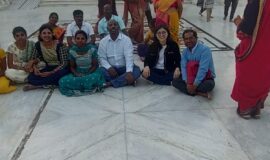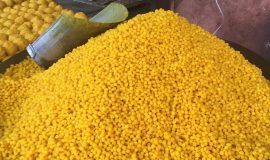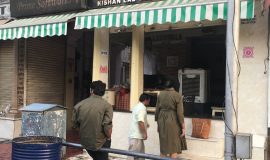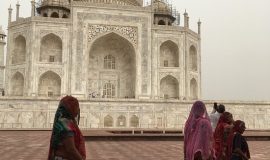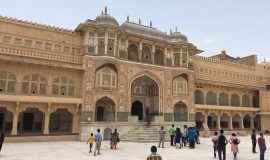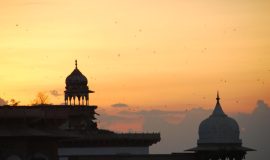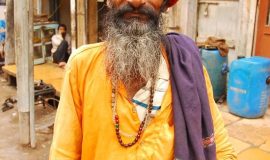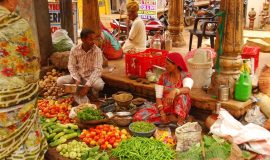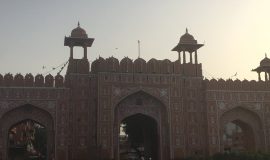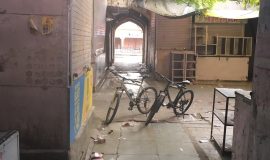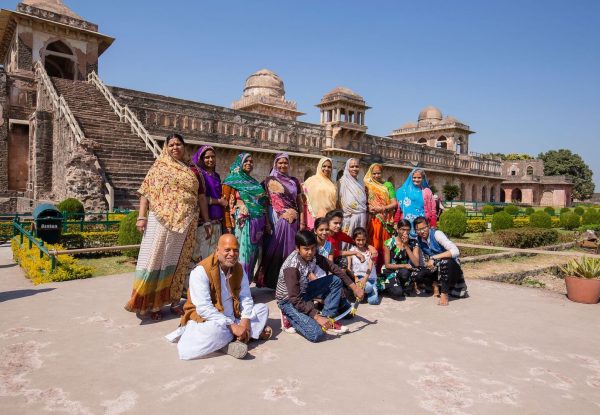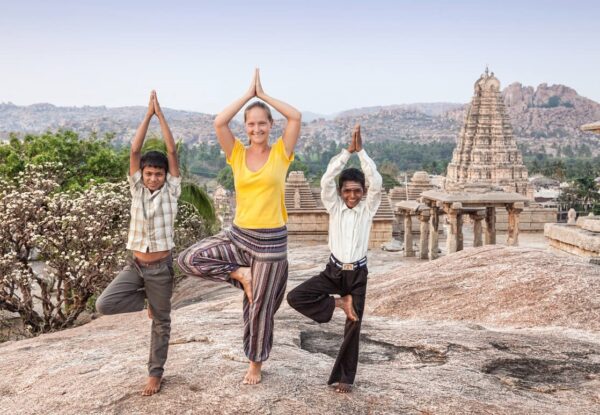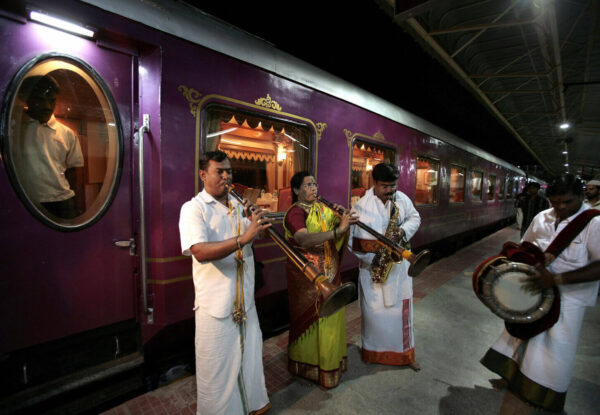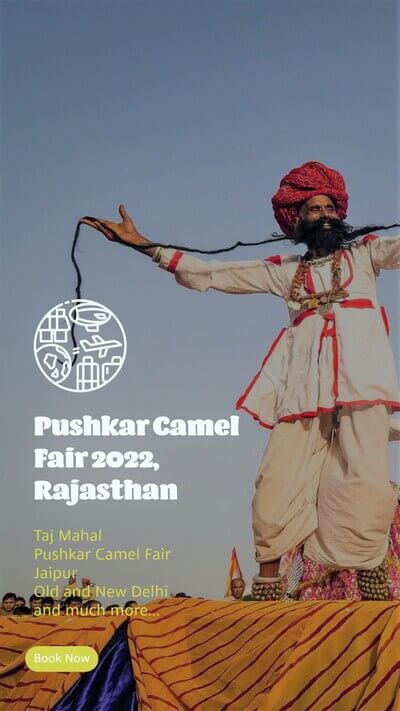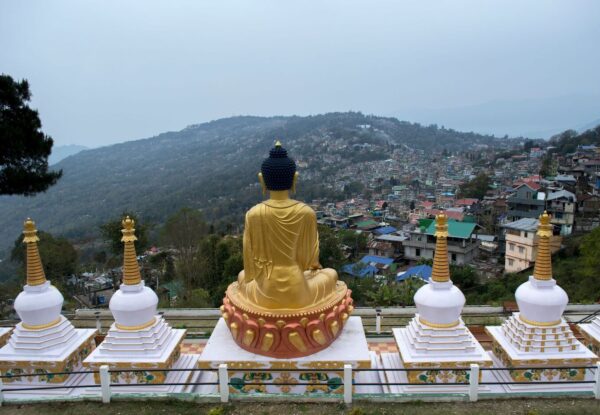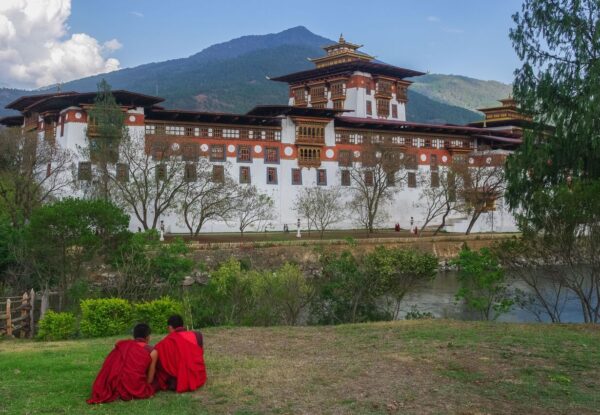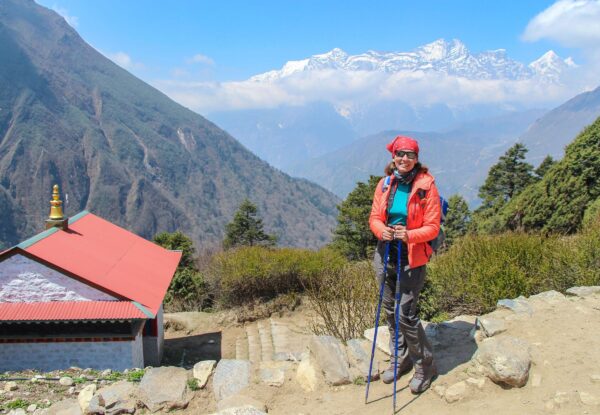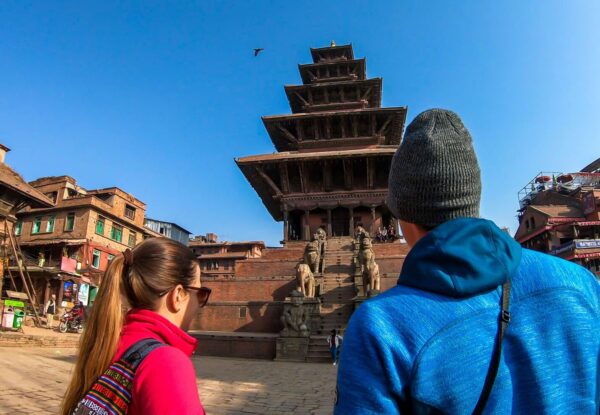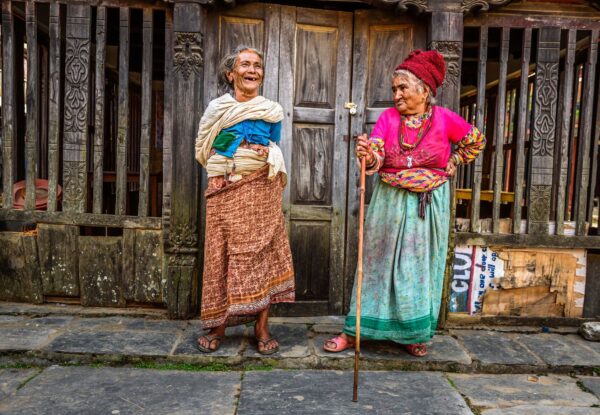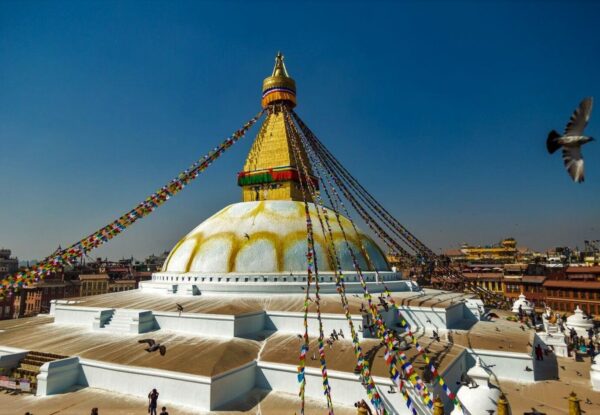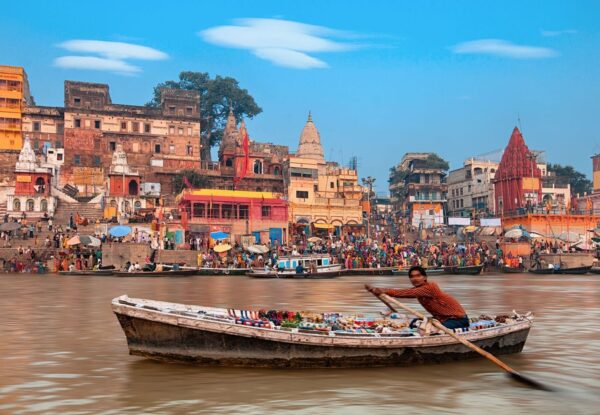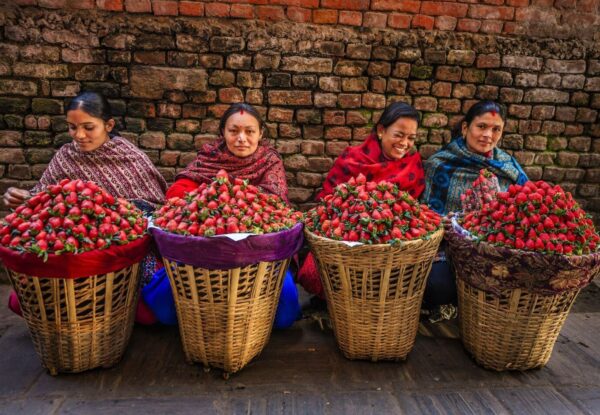Highlights of Best of Kathmandu and Bhutan including Bhutan Festivals
Trip Details
This two-country tour of Nepal and Bhutan offers you an exciting mixture of culture and nature; you will visit bustling Kathmandu, watch rhinoceros in Chitwan National Park and ascend the breathtaking Tiger’s Nest and much more. This round trip is the answer for everyone who always yearned to explore the Bhutan kingdom and also get a taste of fabulous Nepal. From vibrant Kathmandu your trip will take you to the Land of the Thunder Dragon. You will hike up to the famous Tiger’s Nest and admire the specific architectural beauty of monastic fortresses, also called dzongs. In Nepal you will get the opportunity to see one-horned rhinos and other wildlife in Chitwan National Park, the perfect way to bring a thrilling tip to a relaxing end.
Highlights
- Bhutan – Serene Buddhist monasteries, fertile green valleys and soaring Himalayan peaks are ever present throughout your travels in the Bhutan Kingdom
- Bhutan – Get swept up in the colorful traditional festivals and get to know the friendly, welcoming Bhutanese people
- Nepal – Discover the ancient history of the Kathmandu Valley at Durbar Square, the age-old Swayambhunath and Boudhanath Stupas, and then visit the amazing Pashupatinath Temple Complex
- Nepal – Spend 2 nights in the Chitwan National Park and spot a one-horned rhino or two
Festivals in Bhutan during this Trip
In Bhutan the Thimphu and Paro Festivals are the two celebrations most popular with both the local people and visitors alike. The reason is two-fold; they take place during autumn and spring respectively, the two best seasons weather-wise for a visit to the kingdom. Secondly, they are held a mere hour’s drive from the airport, in the western region of Bhutan, making them easily accessible. This means visitors can easily attend a festival during a four-day visit.
Paro Tshechu, Paro, Mar 20, 2024 – Mar 24, 2024
Talo Tshechu, Punakha, Mar 17, 2024 – Mar 19, 2024
What to do if you are not in time for the festival?
If perchance you are traveling in the kingdom but cannot attand the festival, you still have a good opportunity to see a lot of the preparations as they start weeks prior to the actual celebrations. At the Dzong you can watch the monks preparing all the colorful materials they will need, so there are plenty of wonderful photo opportunity. The monks and lay people also start practicing their dances so you will be able to strike up conversations with the dancers hiding behind the elaborate masks, and learn more about the meaning and origin of these important celebrations on the Bhutan religious and cultural calendar.
If you are in time for one of the festivals, we will spend a full day watching and enjoying it. Lay dancers and monks in vibrant colored silk and brocade costumes with beautifully painted masks of all colors re-enact the lay and religious histories of the kingdom of Bhutan through dance movements and music. Prayer meetings, rituals and dances continue for a number of days, attended by hordes of villagers from all around the city. The atmosphere is lively and festive as people meet up with old friends and enjoy the sights. Every Bhutanese comes proudly dressed in his/her very best national finery and magnificent silks in all the colors of the rainbow are on display, one of the highlights of the festival. Thimphu and Paro reign as Bhutan’s most popular festivals, and although the celebration in Decehenphu is also well attended, it is smaller in scale.
Please note: If you would like to visit only Bhutan, you need to arrive either in Kathmandu, Nepal or New Delhi, India. Please contact us for a tailor-made itinerary.

India your way, your route, your style
• Price based on two persons in a double room
• Prices are in USD Excluding international flights
• Do you prefer to travel alone or would you like to come to India with a group of friends? We will be happy to tailor-made your tour program that meets all your wishes and needs
| Travel Period | PRICE PER PERSON | |
|---|---|---|
| Apr 1, 2024 – Mar 31, 2025 | price on request (Standard) | INQUIRE NOW |
| Apr 1, 2024 – Mar 31, 2025 | price on request (Deluxe) | INQUIRE NOW |
| Apr 1, 2024– Mar 31, 2025 | price on request (Luxury) | INQUIRE NOW |
Would you like to have the trip tailored to your wishes?
Our itineraries are only examples and suggestions and can be customized individually. For example, a trip can be shortened or extended with additional destinations or monuments, the hotels can be a mix of 4 and 5 star etc. Let us know your personal wishes so that we can adapt the trip to your wishes. Connect with our travel expert for a 1:1 consultation and receive your obligation free travel proposal. Together with the travel request we will send you the hotel list so that you can get a picture of the hotels selected on the internet. We promise ✔Competent and Friendly Guides ✔Expert Drivers ✔Best Hotels ✔24/7 Support. Read more on Why Vacation India?
Get in Touch: info@vacationindia.com / +91-99274-65808 (India Calling & Whatsapp) / USA/Canada: 1 (888) 414-6804
Included in the Tour
Overnight stays:
- Nepal – 5 nights in a comfortable mid-range to luxury hotel and in a snug jungle lodge
- Bhutan – 5 nights in a comfortable mid-range to luxury hotel
Activities in Nepal:
- Jeep safari, dugout canoe trip and jungle walk in a small group with an English speaking guide in Chitwan National Park
- Walkabout in Tharu village inside Chitwan Park
- Guided tour of Durbar Square and other Kathmandu sights as discussed in the itinerary above
- All destinations on the itinerary: Temples and dzongs in Paro, Punakha and Thimphu, the Tiger’s Nest Temple, drive across Dochula Pass, cultural, historic and handicraft museums, Takin Mini Zoo and the largest statue of the Buddha on earth
Transfers:
- Nepal – All transfers to and from airports and guided tours in a sedan
- Bhutan – A private car with a driver and guide throughout the entire trip
Meals:
- Kathmandu, Nepal – Breakfast only
- Chitwan National Park, Nepal – Three meals a day with coffee, tea and water
- Bhutan – Three meals a day with coffee, tea and water
Other:
- A visa for Bhutan
Not Included in the Tour Price
- BHUTAN – Snacks, alcoholic and soft drinks
- Service tips
- Travel insurance
- Any international flights. We can assist you with a quote
- Any personal expenses
- Any expenses regarding videos and cameras
- BHUTAN – Pony ride to the Tiger’s Nest, Paro
- Any optional excursions
- Possible obligatory supplements for travel during Christmas and New Year
Golden Triangle Tour India
Thanks for the tour arrangement and everything is fine, except some of the areas. I understand is not easy coordination works sometimes. Overall is good.
Golden Triangle 6 days trip
**This review was written in German and has been translated using free translating software
We experienced a wonderful trip that impressed us very much. Our program was very varied and ran without any problems.
Your commitment and your availability around the clock, with wishes or changes during the trip, were great and certainly not self-evident. For this a very big thank you to you!
Visiting the Taj Mahal early in the morning to avoid the large crowds was a very good recommendation. The silence and the atmosphere at sunrise are simply fascinating.
We are very grateful for the great experiences and the unforgettable impressions we were able to collect.
We will be very happy to recommend you.
Tailor-made tour of North and South India
Dear Mr. Vikas, we had a hitch-free travel experience, full of positive impressions. As a matter of fact, we recommend this trip to everyone strongly, and we will never forget the organizers for a real professional job. Vacation India is highly recommended from us.
We spent 2-days in New Delhi and Agra. We later move from Delhi to Chennai. Going to our plan, we intended making a roundtrip all through Mahabalipuram, Pondicherry, Tanjore and Trichy, Chettinad, Thekkady, Madurai, Munnar, Backwaters using a houseboat. Also, Mararikulam Beach to Kochi, and from there we had a return flight to Singapore.
As the journey progressed, we experienced India and its rich culture in an excitingly different way. We enriched our travel experience by learning about the people of India from their birth times to death days. It did not end there; the trip was made more fun-filled with houseboat experience and night in Backwaters. Also, we visited tea plantations in the mountains, botanical garden and so much more.
The rainy weather in Thekkady (Periyar Tiger Reserve) made us have a change of plan—we canceled our trip on a bamboo raft. Though the journey was worth it in every regard; we enjoyed our trekking tour in the Reserve. But we ran out of luck as we couldn’t set our eyes on the flying squirrel due to the heavy downpour. Some of the places of interest that made our trip worthwhile are the Taj Mahal, National Museum, the Rail Museum in New Delhi and the Mosque in Old Delhi.
We can’t simply exhaust all here, but we are convinced that our fond memories will always be with us all along.
Delhi to Agra Taj Mahal Visit
**This review was written in Spanish and has been translated using using Google Translator
Actually The service turned into friendliness and was excellent. He knew the places perfectly and I had a very good explanation of everything. Vipul Gupta is an excellent guide.
A bite of India, real, authentic, unforgettable
**This review was written in Spanish and has been translated using using Google Translator
He was traveling to Delhi for work and only had 3 days available that he wanted to make the most of. I contacted vacationindia.com and quickly Laura contacted me and she understood my idea very well. With the little time she had and having visited India 10 years ago, Laura proposed a brief but intense experience tour of Agra and Jaipur. I didn’t want to miss the Taj Mahal, it’s a place you can always come back to. June may not be the best time due to the heat, but on the contrary, it is very calm in terms of tourism and the Taj Mahal was almost for me and some Indian travelers. I loved the proposal of having dinner with a local family, I was able to see how some typical dishes are prepared, all a science and an art! The most important lesson is to be generous with spices, and the concept of too much and too little is very relative. I take with me this little time so unique and familiar.
The traffic is still chaotic but the carts have improved a lot and the trip to Jaipur was very nice and safe with my driver Madam. In Jaipur my guide Manu was waiting for me, with a flower necklace and a smile that did not fade for two days. Manu is charming, he made me feel very comfortable and relaxed and he speaks good Spanish. As I had little time, I selected with Manu the visits that most interested me, I wanted to see the observatory, and Manu knew how to explain the instruments to me wonderfully and even he made me able to calculate the time with exact precision using the huge sundial!
We rode a rickshaw through the old part and as I wanted to get out of the city, we went up to Nagarah Fort to see the sunset over Jaipur.
Jaipur is known for its textile manufacturing and its semi-precious stones and gems, I wanted to know a little more but I had a bad memory of my first time in India when the guides took me to emporiums and tourist shops and I felt pressured to buy. I mentioned this to Manu and he suggested that I visit an area of artisans, where I could see how local textiles and gem shops work. I enjoyed the time without pressure and I couldn’t resist buying a silk pashmina, but nothing else and everyone was so happy.
The next day I ventured out on a bike tour of the city, and it was a sensational experience! I was a bit scared of dealing with the crazy traffic but Hisha made it easy. We leave very early, at 6am when the city has not yet woken up, we stop at a stall to have a lassi, a popular local drink made from yogurt, which the owner family prepares every day in a traditional way since 1944. Soon the More early risers of Jaipuree were approaching for their lassi to start the day. We enter the alleys of the old city, now empty and impassable after 11am when the shops overflow their premises and fill the streets with thousands of stalls. Jaipur was the first planned city in India, and it was very interesting to understand how the city was created, with its havelis, mansions that served as workshops, shops and dwellings, and how it became prosperous, attracting artisans, scholars and merchants from all over the world. India.
We walked through the bustling local market, an explosion of colors and fragrances, flowers, fruits, vegetables, aromatic herbs… we approached a Hindi temple and I mixed with the crowd that begins their day with songs, offerings and petitions to their gods. Quite a show!
Visiting the Amber Fort with my guide was great, because not only did I marvel at the architecture, decorative arts, or the ingenuity of the solutions, but I traveled back in time understanding what life in the palace was like in its origin.
Leaving Jaipur and on the way to Delhi, I was able to visit the village of Samode, rural and quiet. I keep the chai that I shared on the street with some local farmers while they told me how their harvest was going while they waited for the rains.
It has been a very short trip, although so full of experiences that it seems longer. Thanks to vacationindia for making it possible, I am left wanting more so my next destination will be India again, now the South!
To receive the list of Hotels selected for this tour, please email us at info@vacationindia.com
Keywords: Best of Kathmandu and Bhutan including Bhutan Festivals
Similar Tours You May Like
Tour of Sikkim, Darjeeling and Bhutan
New Delhi – flight to Bagdogra – drive to Darjeeling – Gangtok (Sikkim) – Pelling – Gorumara National Park – Thimphu (via Phuentsholing), capital of Bhutan – via Dochula Pass to Punakha – Paro (Tiger’s Nest) – flight to Kolkata (Calcutta) or New Delhi
6 Days Bhutan Journey with Luxury Amankora Hotels and Taj Tashi Hotel
Thimphu – Punakha – Paro (Tiger’s Nest)
Everest Base Camp Trek
Kathmandu ➜ Flight to Lukla ➜ Hike to Phakding ➜ Dhudh Kosi (Sherpa Villages, Namche Bazaar) ➜ Khumjung (Kunde to Acclimatize) ➜ Thyangboche Monastery ➜ Kyanjuma ➜ Khumbu Valley ➜ Imja Valley ➜ Dingboche ➜ Lobuche ➜ Everest Base Camp (Gorak Shep, Kala Pattar, Climb Down to Pheriche) ➜ Kathmandu
Go Nepal: A 12-Day Nepal Experience
Kathmandu (Thamel Area, Leisure Time) ➜ Chitwan National Park ➜ Pokhara ➜ Tikhedhunga ➜ Ghorepani ➜ Tadapani ➜ Ghandruk ➜ Dhampus ➜ Pokhara ➜ Kathmandu
Classic Nepal Tour: Kathmandu, Bandipur, Chitwan, Pokhara
Kathmandu (Thamel Area) ➜ Swayambhunath ➜ Durbar Square Bazaar ➜ Hanuman Dhoka ➜ Patan ➜ Bhaktapur ➜ Pashupatinath and Boudhanath ➜ Bandipur ➜ Manakamana Temple ➜ Pokhara ➜ World Peace Pagoda ➜ Davis Falls ➜ Phewa Lake ➜ Chitwan National Park ➜Kathmandu
Golden Triangle + Varanasi (Ganges) + Nepal
New Delhi ➜ Agra ➜ Abhaneri Stepwell ➜ Ghost City Fatehpur Sikri ➜ Jaipur ➜ Varanasi (Ganges & Sarnath) ➜ Kathmandu ➜ Pokhara ➜ Kathmandu (Swayambhunath, Pashupatinath & Boudhanath)
Rajasthan And Nepal – The Epic Adventure Of India And Nepal
New Delhi ➜ Mandawa ➜ Khimsar (Heritage Fort Hotel) ➜ Jodhpur ➜ Ranakpur ➜ Udaipur ➜ Chittorgarh Citadel ➜ Bundi ➜ Jaipur ➜ Abhaneri Stepwell ➜ Fatehpur Sikri ➜ Agra (Taj Mahal & Red Fort) ➜ Khajuraho ➜ Orchha ➜ Varanasi (Ganges & Sarnath) ➜ Lumbini (Nepal) ➜ Pokhara ➜ Chitwan National Park ➜ Kathmandu
India to Nepal Tour
New Delhi ➜ Jaipur ➜ Ranthambore National Park ➜ Abhaneri Stepwell ➜ Ghost City Fatehpur Sikri ➜ Agra (Taj Mahal & Red Fort) ➜ Khajuraho ➜ Orchha ➜ Varanasi (Ganges & Sarnath) ➜ Lumbini (Nepal) ➜ Chitwan National Park ➜ Pokhara ➜ Kathmandu


